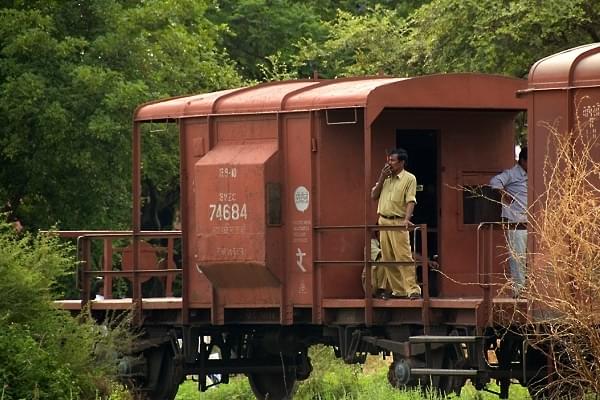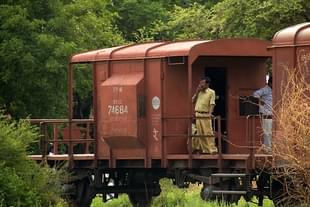News Brief
Railways To Replace Guard Vans On Freight Trains With EoTT Devices
Arun Kumar Das
Nov 25, 2020, 11:57 AM | Updated 11:57 AM IST
Save & read from anywhere!
Bookmark stories for easy access on any device or the Swarajya app.


Emphasising on technology, Indian Railways is installing a new system to do away with guard vans and the practice of deploying guards at the rear-end of goods trains to ensure all wagons remain intact when the train is in motion.
The technology-driven initiative envisages replacement of guard vans with fully loaded wagons equipped with a sophisticated device called the End of Train Telemetry (EoTT) system.
The Rs 100-crore project envisages procurement of EoTT, a device that aims to establish communication between the locomotive driver and the last wagon of the train, and will be equipped in all freight trains.
While Railways would purchase a total of 1,000 such devices from abroad, the Banaras Locomotive Works (BLW) in Varanasi, previously known as Diesel Locomotive Works, has ordered 250 EoTTs from South Africa.
"To begin with, we are procuring 10 such devices from the USA and South Africa next month for trial purposes, though the EoTT system is successfully operational in all advanced countries," said a senior Railway Ministry official.
The purchase of 740 EoTT devices is expected to be taken up in the next phase.
There are about 7,000 goods trains running in the Indian rail network, engaging about 16,000 guards in the country.
Each set of EoTT devices is estimated to cost approximately Rs 10 lakh.
"The initiative is a cost-effective project as the guard van would be replaced with a fully loaded wagon as we are increasing the number of wagons in the same trains," the official maintained.
The equipment is designed to do the guard's job by giving an indication to the loco driver in case of parting of wagon or coach from the rear side of the train.
The EoTT system comprises two units — one unit called a cab display unit (CDU) fitted on the locomotive and the other is a sense and brake unit (SBU) fitted on the last coach or wagon of the train.
The EoTT is expected to establish communication between the loco driver and the last wagon of the train to ensure that the freight train is running with all wagons as a complete unit.
Explaining the system, the official said, "A transmitter is fitted on a locomotive and a receiver is fitted at the end of the last wagon. The transmitter and the last wagon receiver exchange signals periodically to ensure that the train is running intact. If there is a break in the communication between the two units, the driver gets a signal that the train has delinked and accordingly the train has to be stopped to relink the parted wagons."
However, the Railways maintain that EoTTs would not be installed in passenger-carrying trains and the guard vans would continue on passenger services.
Arun Kumar Das is a senior journalist covering railways. He can be contacted at akdas2005@gmail.com.




